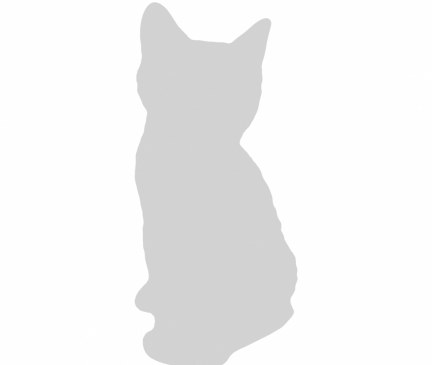

Kittens For Sale
Featured Listings (Follow Breed)
Cymric Cat Breed Description
Cymric Traits At A Glance
Active
Playful
Requires Attention
Affectionate
Vocal
Docile
Intelligent
Independent
Health
Grooming
Child Friendly
Pet Friendly
Size: Cymric cats are medium in size and weigh 8 to 12 pounds.
Characteristics: One of the most distinguishing characteristics of the Cymric is its lack of tail. While it may appear to be completely tailless, some Cymrics actually do have some tails. Some cats are called "longies" and actually have normal length tails and some are called "stumpies" and have short tails. A Cymric that has no tail is called a "rumpy" and has just a small rise of bone. They are a strong, muscular cat that are medium in size and very sturdy. They have a round head with big, round eyes that are incredibly endearing.
Temperament: Many people love the sweet, playful and gentle personality of the Cymric cat. They are highly intelligent and learn tricks very quickly and easily. They love to play and make wonderful family pets as they get along with everyone. They are also very chatty, they love to talk to anyone who will listen. Because of their strong and muscular legs, they are powerful jumpers, capable of reaching great heights.
Care: While the Cymric does have a long coat, it is relatively easy to groom. It simply needs to be brushed 2 or 3 times each week and may require extra brushing when it is shedding season. Additionally, trim their nails and clean their ears to keep them looking their best. And, be sure to brush your Cymric's teeth often to prevent periodontal disease and keep their breath fresh so you can give them kisses!
Coat: The Cymric has a thick double coat and only differs from the Manx in coat length. The coat feels soft and silky and comes in a wide variety of colors and patterns.
Origin: Like some other cat breeds, the origins of the Cymric cat breed are a little vague. It is believed that the Cymric cat breed is from the Isle of Man. The Cymric is a longhaired Manx, and may date back as far as 1750. And, just like the Manx, it has no tail. It is not believed that the cats are indigenous to the island and there are many theories and tales surrounding how they arrived at the island. Some believe they came to the Isle of Man with the Spanish Armada or with Viking Settlers. They may have come from England or Wales, which are very close.
It is believed that the breed is the result of a natural genetic mutation that occurred among the domestic cats of the island, which also means that the short-tail gene is a dominant gene. This is an important distinction as it means that it is not related to many other breeds with short tails as they are often a result of recessive genes. Manx cats quickly grew in popularity among cat fanciers because of their unique appearance and wonderful personality. The longhaired Cymric took longer to catch on in popularity, in spite of the fact that it is simply a longhaired variation of the Manx.
The Cymric was shown in ACA in 1963 and in 1976, the CCA was the first to accept the breed for championship status. But, the breed was not granted championship status by TICA until 1979. Cymric breeders Blair Wright and Leslie Falteisek helped promote the breed and even helped name it. Cymric was given its name by the two breeders and is the Welsh word for Wales. The name was changed to Longhair Manx by the CFA in 1994 and the two breeds share a single breed standard. In some associations, the breed is considered its own and in some associations it is considered a part of the Manx breed.







































